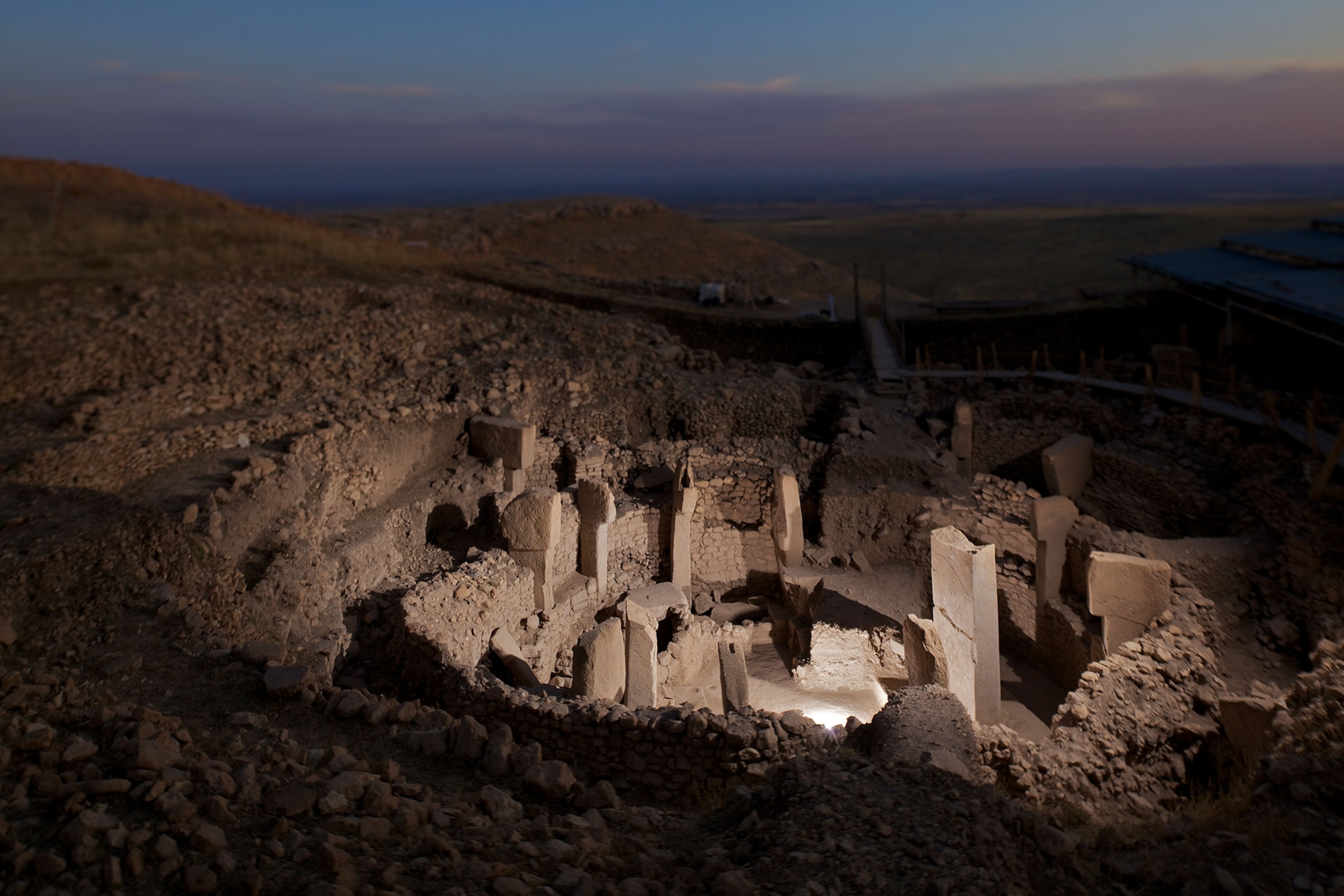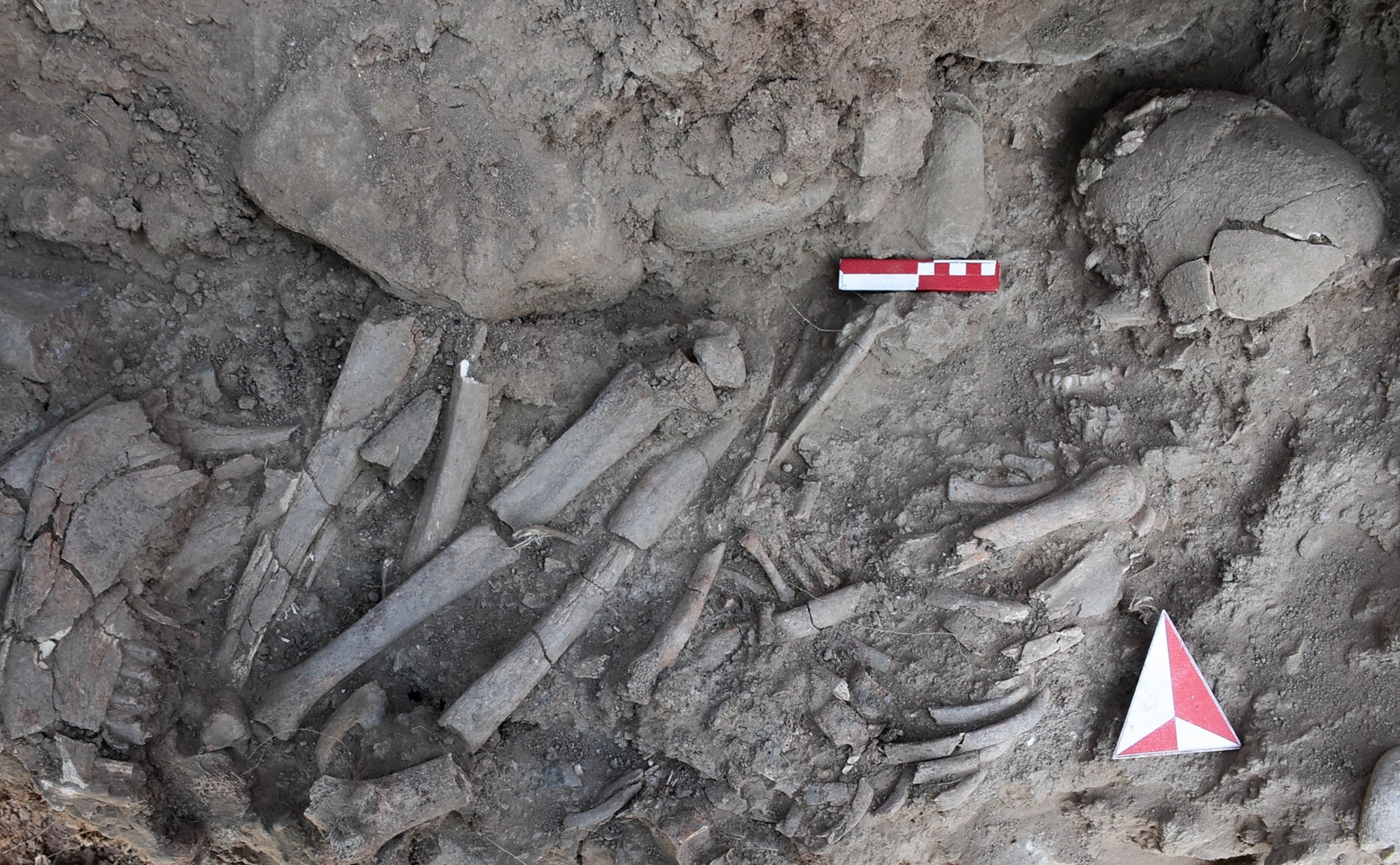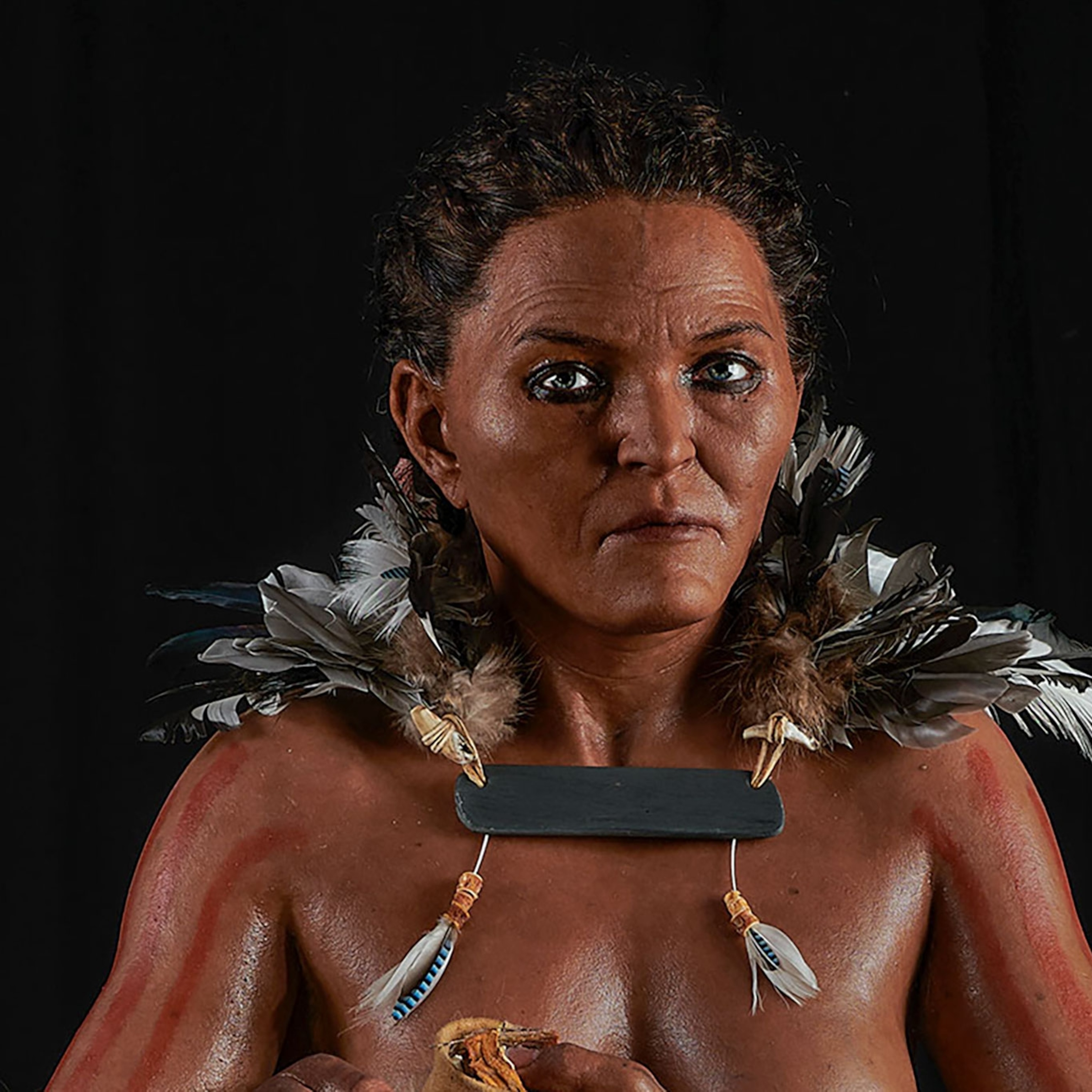Newly found 12,000-year-old burial may belong to a female ‘shaman’
Buried at a critical point in human history, the remains of a woman and various wild animals may suggest she played an important—and unexpected—spiritual role.

A woman buried roughly 12,000 years ago near the upper reaches of the Tigris River in southwestern Turkey may have been a shaman thought to have a spiritual connection with wild animals, a new study published in the journal L'Anthropologie suggests.
The unusual burial at Çemka Höyük—Turkish for “mound by the water”—took place during what archaeologists call the Pre-Pottery Neolithic A (PPNA) period, a transitional stage of human society between 10,000 and 8,800 B.C and shortly before the development of agriculture. People at this time were still hunter-gatherers, like their Mesolithic ancestors, and pottery hadn’t yet been invented.
But it seems they had already formed settlements, at least for parts of the year, at places like Jericho in the Palestinian Territories and Göbekli Tepe, an archaeological site in Turkey about 150 miles west of Çemka Höyük.
Strange burial
The woman, who died from natural causes between 25 and 30 years of age, was buried beneath the floor of a mud-brick building at Çemka Höyük, while another 14 people were buried beneath other buildings nearby. Burying the dead beneath the floor of a home was common during the PPNA, but archaeologists were surprised that the woman’s grave was covered with a large limestone block—unusual in a burial from this time.
There were more surprises once the grave was excavated: the skull of an aurochs (a primitive ox) was placed above the woman’s body, with its jaw separated and resting at her feet. Other animal bones, including the wing of a partridge, the leg of a marten, and the remains of a sheep or goat seemed scattered throughout the burial pit.

The woman’s burial took place before farm animals were domesticated, and so the creatures must have been wild, explains archaeologist Ergül Kodaş of Turkey’s Mardin Artuklu University and lead author of the study. The presence of so many bones from an aurochs also indicates the importance of wild cattle, he notes, which wouldn’t be domesticated for thousands of years but were already a primary food animal.
Early rituals
The British archaeologist Kathleen Kenyon defined the PPNA during excavations at Jericho in the 1950s.
Become a subscriber and support our award-winning editorial features, videos, photography, and much more.
For as little as $2/mo.
Her first impressions were of a simple hunter-gatherer society, but archaeologists are increasingly understanding how complex things were at the time, evidenced by their discoveries of sophisticated tools and elaborate PPNA settlements.
For example, they now think the PPNA ruins at Göbekli Tepe represent a complex settlement or temple of some sort, based in part on the monumental pillars used to build it and their elaborate carvings of lions, bulls and foxes.
A study by Kodaş and his colleagues published in Antiquity earlier this year also describes personal ornaments from the PPNA site of Boncuklu Tarla about a mile from Çemka Höyük; and that site also boasts what may be the world’s earliest sewer.
The researchers suggest the unusual burial at Çemka Höyük may be a sign the woman was a “shaman” thought to have access to spirits, such as those thought to exist in animals.
But the researchers acknowledge the burial’s strange features might be from other ritual practices, including animal worship, metonymy—such as the idea that idea that a bone from a bird’s wing might cause flight—or feasting during burials, rather than shamanism.
“[Shaman] is not a term we suggest,” says Kodaş . “Other events can cause similar burials, but these are not seen in the burials of other individuals at the settlement.”
Neolithic shamanism
University of Oxford archaeologist Bill Finlayson, an expert on the PPNA era who was not involved in the study, says use of the term “shaman” to mean a spirit practitioner was coined in the 18th century to describe indigenous practices in Siberia, and may not accurately describe the role of Neolithic “shamans” like the woman buried at Çemka Höyük.
He noted, however, that some PPNA burials are described as “shamanic” because of their similarities to the 12,000 year-old burial of a woman sometimes described as a “shaman” or “sorcerer” at the site of the Hilazon Tachit cave in Israel. That woman was buried with dozens of tortoise shells, a severed human foot, a leopard pelvis, and the wing of a golden eagle.
“This may have been someone who was a bit strange, or particularly gifted in some way, or maybe a ritual practitioner—someone who remembered ritual practices for the community,” Finlayson says. “And it may be that she was a shaman—but the term gets used today mainly because it’s a nice, handy shortcut.”
A New Age
But Steve Mithen, an archaeologist at the University of Reading in the United Kingdom who wasn’t involved, says severe social and environmental changes during the PPNA period might have increased the importance of people who could communicate with unseen powers.
“People were experimenting with new ways of living—including sedentism, cultivating plants, herding animals—and new technologies,” he says. “Their levels of insecurity and uncertainty would have become heightened, leading to a greater intensity of shamanic practices.”
And Thomas Levy, a University of California San Diego archaeologist who also wasn’t involved, says the recent Çemka Höyük discoveries are important additions to the modern understanding of the PPNA and the evolution of complex settled societies from groups of hunter-gatherers.
Archaeologists now think ritual belief played an important part in the development of early societies, and this strange burial indicates women were deeply involved.
“The recent discovery of the female burial associated with exotic animal grave offerings… necessitates rethinking the role of women in this process,” he says.
Related Topics
You May Also Like
Go Further
Animals
- We finally know what caused Florida fish to spin in circles until they diedWe finally know what caused Florida fish to spin in circles until they died
- 5 clever animals that treat and prevent their own illnesses5 clever animals that treat and prevent their own illnesses
- What would the world look like without mosquitoes?What would the world look like without mosquitoes?
- Social media loves to villainize dolphins. Here's why it's wrong.Social media loves to villainize dolphins. Here's why it's wrong.
- How did wolves evolve into dogs? New fossils provide cluesHow did wolves evolve into dogs? New fossils provide clues
Environment
- This little bird tells the story of the East Coast’s disappearing marshesThis little bird tells the story of the East Coast’s disappearing marshes
- ‘Corn sweat’—and other weird weather phenomena—explained‘Corn sweat’—and other weird weather phenomena—explained
- A sea tornado sank a yacht. We might see them more often.A sea tornado sank a yacht. We might see them more often.
History & Culture
- Your favorite foods have surprising global originsYour favorite foods have surprising global origins
- How did ancient Egyptian obelisks end up all over the world?How did ancient Egyptian obelisks end up all over the world?
- What we’ve learned—and lost—since the Titanic wreck was foundWhat we’ve learned—and lost—since the Titanic wreck was found
- Did Babe Ruth really ‘call’ this legendary home run?Did Babe Ruth really ‘call’ this legendary home run?
- The real history behind the legend of China's Monkey KingThe real history behind the legend of China's Monkey King
Science
- 8 things we’ve learned about how alcohol harms the body8 things we’ve learned about how alcohol harms the body
- Is mouth taping the secret to a better night's sleep?Is mouth taping the secret to a better night's sleep?
- Mold is in your kitchen—and in places that might surprise youMold is in your kitchen—and in places that might surprise you
Travel
- This slave rebellion was almost lost to history–until nowThis slave rebellion was almost lost to history–until now
- Discover America's Oktoberfest capital: CincinnatiDiscover America's Oktoberfest capital: Cincinnati
- Here's what an astronaut has to say about space tourismHere's what an astronaut has to say about space tourism
- 4 of the best food experiences on Scotland's Isle of Skye4 of the best food experiences on Scotland's Isle of Skye







